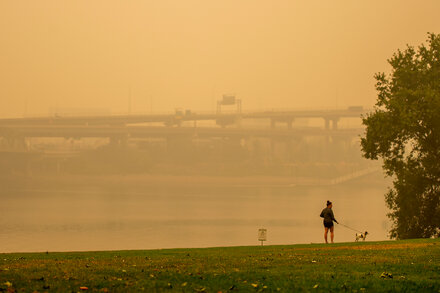As environmental concerns mount, our beloved pets face increasing risks from various forms of pollution. Protecting them requires proactive measures and awareness of potential environmental hazards in their daily lives.

As environmental concerns grow, the impact of pollution extends beyond human health to affect our beloved animal companions. Pets, particularly dogs and cats, can be vulnerable to various forms of environmental contaminants, from airborne particulate matter to chemical residues in their immediate surroundings. Protecting them requires a proactive approach and awareness of potential hazards.
Veterinary experts and environmental health specialists increasingly emphasize the importance of mitigating pets’ exposure to pollutants. Just like humans, animals can suffer from respiratory issues, skin irritation, gastrointestinal problems, and long-term health complications due to poor air and water quality, as well as contact with harmful chemicals.
Addressing Air Quality
Air pollution, both indoors and outdoors, poses a significant threat. Outdoor air can be compromised by vehicle emissions, industrial pollutants, smoke from wildfires, and allergens. Indoor air quality can be affected by second-hand smoke, volatile organic compounds (VOCs) from cleaning products and furniture, dust, mold, and pet dander itself.
To protect pets from outdoor air pollution:
- Monitor local air quality index (AQI) reports, especially during periods of high pollution or wildfire smoke.
- Keep pets indoors on days when air quality is poor.
- Limit strenuous outdoor activities during peak pollution times.
- Consider walking pets during off-peak traffic hours or in less congested areas.
For indoor air quality:
- Ensure adequate ventilation in your home.
- Use air purifiers with HEPA filters to capture particulate matter and activated carbon filters to absorb gases.
- Avoid smoking indoors or burning candles/incense that produce significant smoke.
- Choose pet-safe, non-toxic cleaning products and ensure proper ventilation when cleaning.
- Regularly clean and vacuum to reduce dust, dander, and other indoor allergens.
Ensuring Water Safety
Contaminated water can lead to serious health issues for pets. While tap water in many areas is safe for human consumption, some regions may have concerns about lead pipes, agricultural runoff, or industrial contaminants. Outdoor water sources like puddles, ponds, and lakes can harbor bacteria, parasites, algae, and chemical pollutants.
To ensure water safety for pets:
- Provide fresh, filtered water for your pets. Consider using a pet-specific water filter or a filtered water dispenser.
- Regularly clean water bowls to prevent bacterial growth.
- Prevent pets from drinking from puddles, standing water, or untested natural water bodies during walks.
- Be aware of local water advisories, especially after heavy rains or environmental incidents.
Minimizing Chemical Exposure
Pets are often closer to the ground, increasing their exposure to chemicals applied to lawns, gardens, and indoor surfaces. Pesticides, herbicides, fertilizers, and even road salts can be toxic if ingested or absorbed through paw pads.
Strategies to minimize chemical exposure include:
- Opt for pet-safe and organic alternatives for lawn and garden care.
- Ensure pets do not walk on recently treated lawns or areas.
- Wipe pets’ paws after walks, especially in urban or treated areas, to remove any residues.
- Store all household chemicals, medications, and cleaning products in secure, inaccessible locations.
- Be cautious with pest control products in and around the home, always choosing pet-friendly options and following instructions carefully.
Proactive pet owners can significantly reduce their pets’ exposure to environmental pollutants by staying informed, making conscious choices about their home environment, and consulting with their veterinarians. Regular check-ups are also crucial to monitor for any signs of pollution-related health issues.
Source: Read the original article here.





